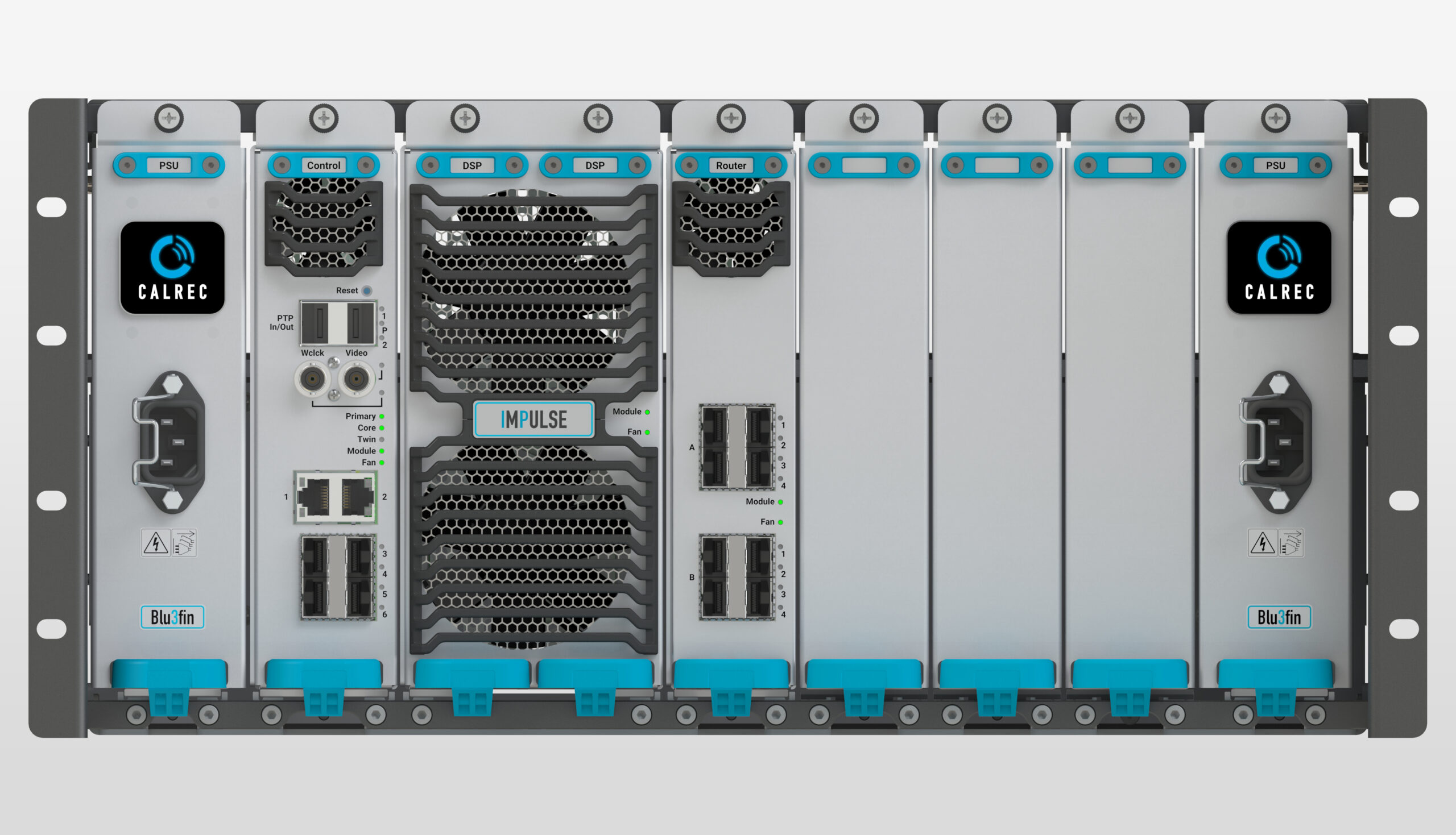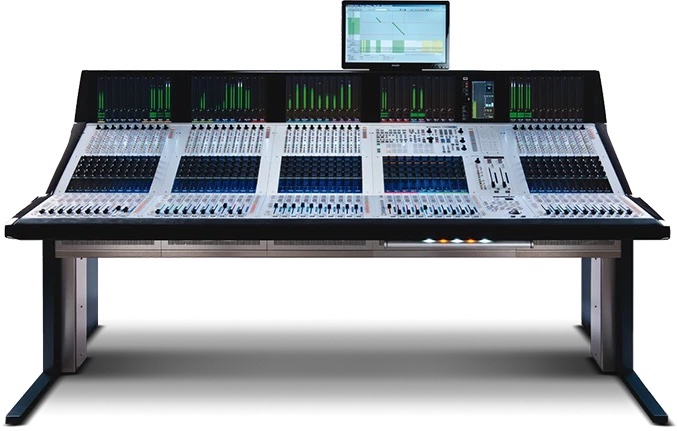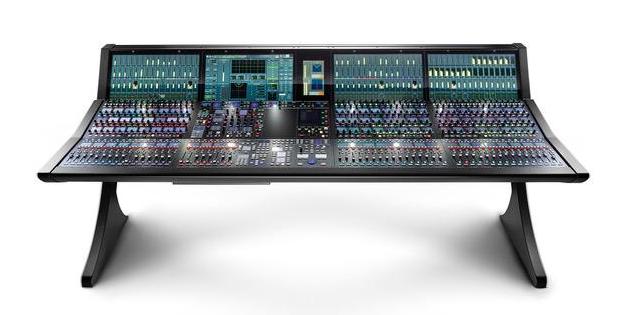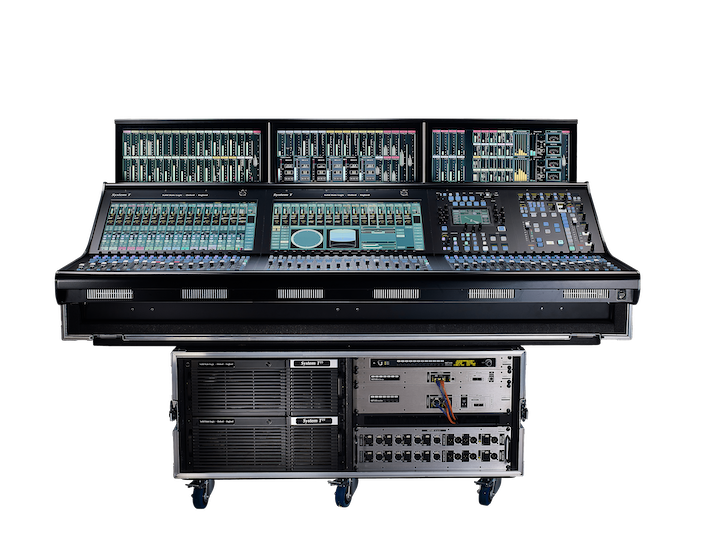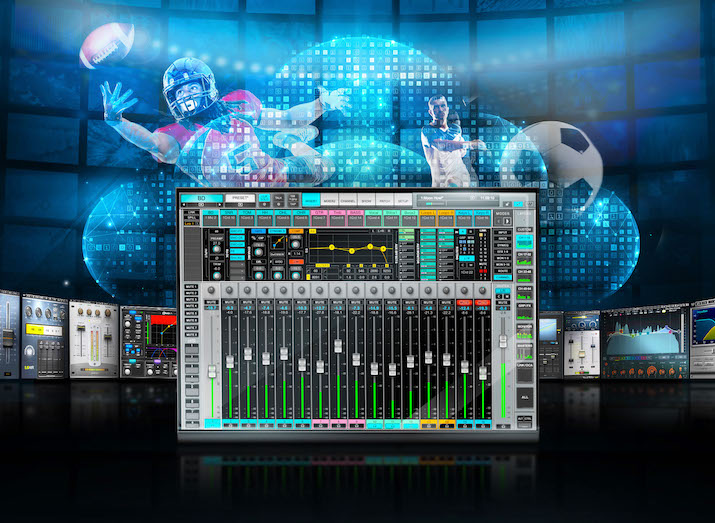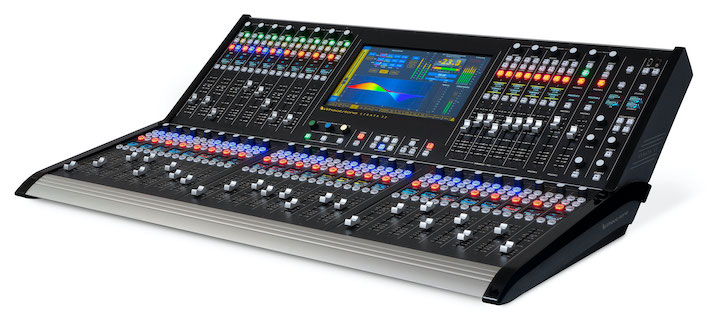Tech Focus: Audio Consoles, Part 2 — Remote Products Are a Small but Diverse Category
Vendor offerings are available in a wide range of sizes and functions
Story Highlights
Remote audio-mixing consoles for broadcast are still a relatively small category at the high end of the market, but there’s great diversity within the group, thanks to increased demand for consoles in a variety of sizes and functionality. Here’s an overview of the leading offerings.
Click here for Tech Focus: Audio Consoles, Part 1 — Cloud-Based Systems Are Next in a History of Constant Change.
Calrec
The Assist web GUI is implemented on Calrec’s new Argo Q and Argo S configurable control surfaces, as well as on Apollo, Artemis, and Type R consoles to provide remote control from a remote location. It’s also available on the RP1, which continues to provide full broadcast capabilities at a remote venue from an established studio environment.
Calrec’s IP-based ImPulse core has a native SMPTE 2110 IP backbone and a defined path for broadcasters to upgrade to an IP infrastructure. ImPulse is compatible with existing Apollo and Artemis control surfaces and Calrec’s new approach to audio mixing — Argo Q and Argo S — and is NMOS-compliant, which is critical to the unified workflow of products from different manufacturers. For broadcasters producing live content in immersive formats over platforms like MPEG-H and Dolby Atmos, ImPulse also provides 3D immersive path widths and panning, with full monitoring and metering and height and 3D-pan controls.
Calrec has also introduced a smaller yet powerful, cost-effective ST 2110 version of the established ImPulse. Designed for small to medium-size single-mixer applications, ImPulse1 is a compact 1RU audio-processing and -routing engine with an optional second core for redundancy and a new 128-input-channel DSP pack offering entry-level pricing. ImPulse1 works with Argo Q and Argo S control surfaces and/or Calrec Assist, suiting it to remote, multi-operator, and/or headless operation.
In addition, Calrec’s modular Type R IP-native mixing system is increasingly being used for distributed production. www.calrec.com/
Evertz
The Studer Audio portfolio, celebrating its 75th anniversary this year, continues to expand. Since acquiring Studer in 2021, Evertz has integrated the brand’s Vista digital mixing consoles into its own Software Defined Video Networking (SDVN) platform. Now supporting SMPTE ST 2110, the consoles are an important addition to Evertz’s live-production workflows. This year, Evertz has brought all the power of Studer Vista to its DreamCatcher BRAVO Studio virtual production-control suite, which allows users to quickly and easily produce high-quality live content at lower cost. The introduction of Vista BRAVO provides virtual access to a full mixing console featuring all the enhanced audio capabilities. With Vista BRAVO, users have the flexibility necessary to enhance sports and other productions, whether on-premises or through the cloud. For remote production, Evertz has expanded the Vista controls to its software-based VUE Intelligent User Interface, with more than 2,000 bidirectional controls. VUE mirrors the physical controls of a Vista audio console onto a software interface that is touch-enabled and accessible from any web interface in any location. Inclusion of Vista controls into VUE emphasizes the company’s continuing efforts to integrate Studer into its eco-system. evertz.com/
Lawo
Lawo’s mc² mixing consoles — mc²96, mc²56, mc²36 — are focused on IP-based broadcast, AV, and live-production scenarios. They are available in multiple configurations for at-home productions, flypacks, production trucks, and large production facilities in on-premises, WAN-distributed, and hybrid deployments. Thanks to open standards like ST 2110, RAVENNA, and AES67, remote-production capability comes as standard.
The mc² consoles integrate with HOME, Lawo’s management platform for IP-based media infrastructures, which is designed to connect, manage, and secure all aspects and instances of live production. In addition to automatic discovery and registration, HOME provides centralized services for swift and effective interaction of engineers with their tools, whether manufactured by Lawo or other vendors that support the HOME API.
The mc² consoles are powered by the A__UHD Core audio engine as the heart of a dynamic and distributed audio-production system. Distributed production approaches involving two or more audio engineers working from adjacent or geographically distanced locations can be used over secure WAN connections, regardless of whether a data-center–style resource-pooling strategy or a globally scattered network of A__UHD Core units is preferred. Software licenses are stored on USB dongles and can be downloaded for seamless transfers from unit to unit. The Pool DSP license allows operators to split the 1,024 available DSP channels across multiple consoles in a range of configurations for physical, virtual, and headless (automation-driven) control surfaces.
A wide range of IP-based audio edge devices is also available. The A__stage series accommodates users in search of high-channel-count I/O in a variety of formats (analog, AES3 digital, MADI); the single-format A__line devices are usually used in flypacks, mobile remote setups, and locations where only a few sources and destinations are used. PowerCoreRP is a remote-production solution for mc² audio consoles with built-in modular I/O, DSP, and IP-streaming capabilities. Rear-panel bays allow users to add as many as eight I/O cards for additional audio inputs/outputs and interfacing with MADI and Dante networks. The PowerCoreGateway is a modular audio stagebox for professionals, who can software-upgrade to RP functionality when they need additional DSP power.
All Lawo consoles support automation and studio/remote-management applications, including Ember+ and vendor-agnostic VSM Virtual Studio Manager IP broadcast-control system. For scripted remote productions, Lawo’s Mix Kitchen approach allows A1 engineers to work from home or somewhere on the road. www.lawo.com/
Solid State Logic
System T is a fully networked broadcast-audio–production environment across an IP-based, network-native control and audio infrastructure. Its highly configurable architecture and hardware and software control interfaces can be distributed anywhere across a network, with specific offerings for flypack systems and remote-production installations. Control interfaces include the flagship S500 modular large-format console and the flypack-ready S500m, which delivers the same feature set as the S500 in a form factor more than 25% lighter and with turnkey flight-case solutions available. The compact S300 provides 16+1, 32+1, or 48+1 faders, presenting the power and versatility of System T in a streamlined console layout that remains intuitive for operators with a wide range of skill levels. The Tempest Control Rack (TCR) is suited to environments where the power of a broadcast-audio mixer is required but a traditional console is not, such as automated broadcast environments and mobile/remote broadcast applications. Individual remote fader tiles and PC-based control software complete the System T control-interface offering. Any surface variant can connect to either Tempest Processor Engine: a TE1 (up to 256 fully processed paths at 48 kHz) or a TE2 (up to 800 fully processed paths at 48 kHz). In addition, up to three consoles or control interfaces can access a single or fully mirrored redundant pair of Tempest processor engines. System T’s inherent AoIP infrastructure provides inbuilt Dante, AES67, and SMPTE 2110-30 audio-transport capability. A range of interfaces are available to connect to existing I/O infrastructure. solidstatelogic.com
Waves Audio
The Cloud MX fully cloud-based audio mixer for broadcast environments offers pristine audio, high-precision mix control, and creative processing capabilities with full Waves plugin integration — all in a scalable, remotely operated, broadcast-ready cloud workflow. Broadcasters and media organizations can now add state-of-the-art audio mixing and processing to their flexible professional cloud-based workflows, thanks to its crystal-clear double-precision 32-bit-float mixing engine, augmented by the company’s arsenal of cloud-licensed audio plugins.
The Cloud MX is NDI-compatible, fitting easily into NDI-based environments with easy patching and routing of NDI audio streams. It is also easily deployed on AWS and integrated with cloud production systems. Productions can be easily scaled with any number of audio mixers, without the operational costs for shipping, maintaining, or scheduling on-premises gear and personnel.
All Cloud MX packages feature cloud-licensed Waves eMo plugins (eMo D5 Dynamics, eMo F2 Filter, and eMo Q4 Equalizer), which form the mixer’s channel strip for a fast, efficient workflow. Upgrading to Cloud MX Audio Mixer Plus expands audio capabilities with 11 extra cloud-licensed plugins. including Primary Source Expander for automatic mic-bleed elimination, Renaissance Vox vocal compressor, surgical F6 Floating-Band Dynamic EQ, MaxxBass, and L2 UltraMaximizer; upgrading to Cloud MX Audio Mixer Premium adds more than 150 cloud-licensed plugins, including the Dugan Speech plugin for real-time automatic mixing of multiple mics. www.waves.com/
Wheatstone
The WheatNet-IP audio network, an AES67-compliant AoIP system, features a wide selection of devices, software applications, and desktops as well as virtual mixing consoles. The IP audio network offers a new Layers software suite for remote applications, with backend audio processing, mixing, and streaming provisioning hosted on a server located at the home studio and user-interface software for the laptop, tablet, or other “glass” surface located remotely. One Dell or HP server can handle multiple mixing, streaming, or processing instances over IP links connected by WheatNet-IP audio networking. Layers Glass software provides full-function virtual mixing with familiar buttons, knobs, and multi-touch navigation and menuing. WheatNet-IP supports SMPTE ST 2110 and NMOS discovery and offers a full line of AoIP interfaces and consoles for any application, from standalone virtual mixers and compact Tekton 32 console to the large-frame Arcus console. www.wheatstone.com/
